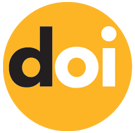The effect of sales growth, earning per share, total assets turn over, return on equity, and debt to equity on stock prices during the COVID-19 pandemic
Keywords:
COVID-19, debt to equity, earning per share, pandemic, return on equity, sales growth, stock price, total assets turn overAbstract
This study aims to determine the effect of Sales Growth, Earning Per Share, Total Assets Turn Over, Return On Equity, and Debt to Equity on stock prices during the Covid-19 pandemic. This signal is in the form of information stating the condition of the Company. This information provides information about what management has done to realize the wishes of the owners of the Company. The data analysis technique used to answer the problem formulation and test the hypothesis above is the Panel Data Analysis technique. Panel data is a combination of time series data and cross-section data. The results showed that Total Assets Turn Over had a positive and significant effect on stock prices, while Sales Growth, Earning Per Share, Return On Equity, and Debt to Equity had no positive and significant effect on stock prices. In uncertainty due to the Covid 19 Pandemic, the Company is required to be more effective and efficient in using its Total Assets to earn income or maintain the viability of the Company. Therefore, information on Total Assets and Revenues obtained by the Company during the Covid-19 Pandemic concerns investors.
Downloads
References
Bahadir, S. C., Bharadwaj, S., & Parzen, M. (2009). A meta-analysis of the determinants of organic sales growth. International Journal of Research in Marketing, 26(4), 263-275. https://doi.org/10.1016/j.ijresmar.2009.06.003
Bayless, M., & Chaplinsky, S. (1991). Expectations of security type and the information content of debt and equity offers. Journal of Financial Intermediation, 1(3), 195-214. https://doi.org/10.1016/1042-9573(91)90007-M
Bodie, Z., Kane, A., & Marcus, A. J. (2019). Dasar-Dasar Investasi. Jakarta: Salemba Empat.
Choiriyah, C., Fatimah, F., Agustina, S., & Ulfa, U. (2020). The Effect Of Return On Assets, Return On Equity, Net Profit Margin, Earning Per Share, And Operating Profit Margin On Stock Prices Of Banking Companies In Indonesia Stock Exchange. International Journal of Finance Research, 1(2), 103-123.
Eilon, S. (1978). Earning per share and takeovers. Journal of Banking & Finance, 2(3), 257-267. https://doi.org/10.1016/0378-4266(78)90015-8
Gilat, R., & Cole, B. J. (2020). COVID-19, medicine, and sports. Arthroscopy, sports medicine, and rehabilitation, 2(3), e175-e176. https://doi.org/10.1016/j.asmr.2020.04.003
Hertati, L., Widiyanti, M., Desfitrina, D., Syafarudin, A., & Safkaur, O. (2020). The effects of economic crisis on business finance. International journal of economics and financial issues, 10(3), 236.
Hovakimian, A., Hovakimian, G., & Tehranian, H. (2004). Determinants of target capital structure: The case of dual debt and equity issues. Journal of financial economics, 71(3), 517-540. https://doi.org/10.1016/S0304-405X(03)00181-8
Khan, M. A., & Smith, J. E. M. (2020). “Covibesity,” a new pandemic. Obesity medicine, 19, 100282. https://doi.org/10.1016/j.obmed.2020.100282
Kohtamäki, M., Partanen, J., Parida, V., & Wincent, J. (2013). Non-linear relationship between industrial service offering and sales growth: The moderating role of network capabilities. Industrial Marketing Management, 42(8), 1374-1385. https://doi.org/10.1016/j.indmarman.2013.07.018’
Lee, B. S., Paek, M., Ha, Y., & Ko, K. (2015). The dynamics of market volatility, market return, and equity fund flow: International evidence. International Review of Economics & Finance, 35, 214-227. https://doi.org/10.1016/j.iref.2014.10.001
Martoyo, M., Herlan, H., Sihaloho, N. T. P., & Darmawan, D. (2021). Local government’s response to the recovery of the tourism sector after the COVID-19 pandemic : case study in Singkawang City, Indonesia. International Journal of Social Sciences and Humanities, 5(3), 176–183. https://doi.org/10.53730/ijssh.v5n3.1580
Merta, I. N., & Suderana, I. W. (2020). COVID-19 pandemic handling community social and cultural sector stimulus efforts. International Journal of Social Sciences and Humanities, 4(3), 1–12. https://doi.org/10.29332/ijssh.v4n3.434
Ndwandwe, D., & Wiysonge, C. S. (2021). COVID-19 vaccines. Current opinion in immunology, 71, 111-116. https://doi.org/10.1016/j.coi.2021.07.003
Nicola, M., Alsafi, Z., Sohrabi, C., Kerwan, A., Al-Jabir, A., Iosifidis, C., ... & Agha, R. (2020). The socio-economic implications of the coronavirus pandemic (COVID-19): A review. International journal of surgery, 78, 185-193. https://doi.org/10.1016/j.ijsu.2020.04.018
Sekaran, U., & Bougie, R. (2017). Metode Penelitian untuk Bisnis: Pendekatan Pengembangan-Keahlian, Edisi 6 Buku 1.www.google.com/finance
www.IDX.co.id
www.yahoo.finance.com
Published
How to Cite
Issue
Section
Copyright (c) 2022 International journal of business, economics & management

This work is licensed under a Creative Commons Attribution-NonCommercial-NoDerivatives 4.0 International License.
Articles published in the International Journal of Business, Economics & Management (IJBEM) are available under Creative Commons Attribution Non-Commercial No Derivatives Licence (CC BY-NC-ND 4.0). Authors retain copyright in their work and grant IJBEM right of first publication under CC BY-NC-ND 4.0. Users have the right to read, download, copy, distribute, print, search, or link to the full texts of articles in this journal, and to use them for any other lawful purpose.
Articles published in IJBEM can be copied, communicated and shared in their published form for non-commercial purposes provided full attribution is given to the author and the journal. Authors are able to enter into separate, additional contractual arrangements for the non-exclusive distribution of the journal's published version of the work (e.g., post it to an institutional repository or publish it in a book), with an acknowledgment of its initial publication in this journal.














